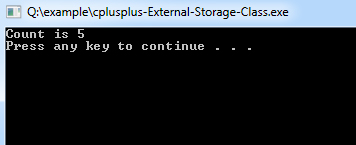Hide IP AddressHide IP
Vikas saini
May 03, 2020
0
Hide IP AddressHide IP
How to Hide Your IP
Address
Borrow a different IP address to go anywhere online and stay
hidden.
Safe
The reasons why you might want to mask your IP address may
include: Hiding your geographical location, preventing Web tracking, avoiding a
digital footprint, or to bypass any content filters, bans or blacklisting.
There are a few ways to hide your IP address...that unique
number assigned to the network connection on the computer.
Four ways to hide your IP address:
Use a VPN Service
Use Tor
Use a Proxy Server
Use Free/Public WiFi
1. Use a VPN
Service – The Best Way
Sign up with these services and when you go online, you'll
be showing the world a different IP address...one that's on loan from the
service you're using.
There are many more advantages to using a personal VPN
service over a proxy such as high speed bandwidth, usability, a secure
connection, private access to blocked sites, and the ability to choose the
country and city where you appear to be.
There are hundreds of VPN companies you could choose
from...many of them shady or poor quality.
Guess what?
We've reviewed and recommend the following best VPN
services:
CyberGhost
Private Internet
Access
NordVPN
Surfshark
PureVPN
ExpressVPN
Don't know which VPN is right for you? Try our new VPN
Simplifier!
2. Use the Tor
Browser – The Slowest Choice
Tor LogoPeople from all over the world use Tor to search and
buy products and communicate with others with restricted Internet access, such
as what exists in some foreign countries.
The Tor Browser (like Chrome, Firefox or Safari) is a free
software program that you download onto your computer that conceals your IP
address every time you go online anonymously. This free process is layered with
heavy-duty encryption, which means your data is layered with security and
privacy protection.
3. Use a Proxy
Server – Potentially Risky Method
A proxy server (sometimes called an "open proxy"
or just "proxies") can be use to re-route your browser (Chrome,
Firefox, Safari, Internet Explorer, or Edge) around company or school content
filters.
There are risks involved in using free proxies to mask your
IP address: Many will slow down your internet connection, some are run on
compromised machines, and may not be legal in some countries.
A safer solution is to use proxies managed by a company such
as Smartproxy.
4. Use Free/Public
WiFi – The Long Distance Option
Free Wi-Fi
An IP address doesn't travel with you. So if you simply go
to a coffee shop, bookstore or hotel lobby and tap into their Wi-Fi, you will
temporarily hide your usual IP address. How so? You'll be using their network's
IP address for as long as you're online.
Try it out. First, click show my ip to see your current IP
address, and then visit any place with free Wi-Fi, log in to their Internet and
check it again.
However, if you don't use a VPN, your Internet activity is
at risk of being spied on or intercepted by a bad guy without your knowing it.
How likely is that?
Who knows! But don't make online purchases or check your
bank account while drinking your Grande Espresso.
In conclusion...
Use a VPN service for high speed bandwidth, usability, a
secure connection, private access to blocked sites, and the ability to choose
the country and city where you appear to be.
CyberGhost
Private Internet
Access
NordVPN
Surfshark
PureVPN
ExpressVPN













